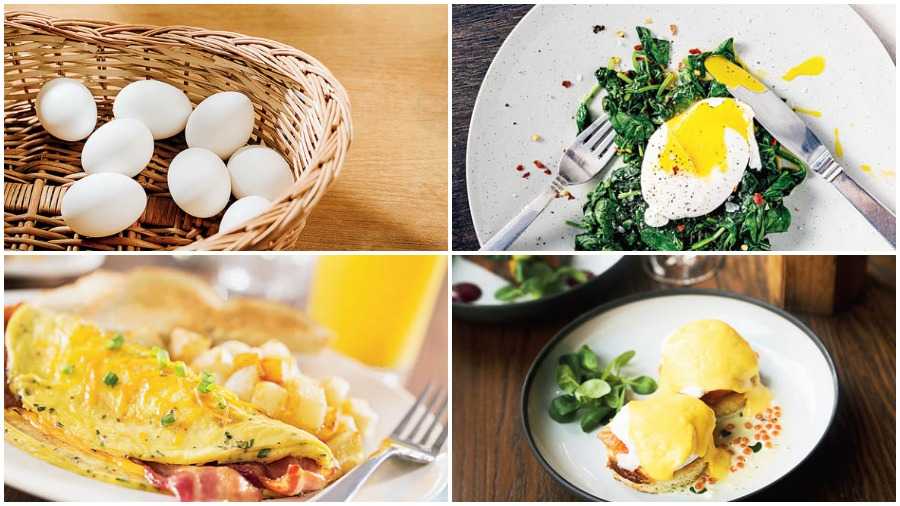It seems more and more people that I speak to these days are turning to eggs as a go-to, to get their protein fix. Here, I am talking about most of my vegetarian friends, slipping out of the family home to have an omelette or a plate of anda bhurji. And why not?! That egg is in many ways an unfertilised, protein-enriched by-product of the farmed hen and not that dissimilar to milk — a by-product from a farmed cow and such an incredible source of protein, vitamins and minerals. Even the WHO recommends up to three eggs per day as part of a balanced diet.
There are so many eggs out there in the market today, ranging from about seven rupees to double and more. Which raises the question, what am I actually paying for and getting when buying that egg?
If we look back at the age-old history of farming hens for eggs, there are just a few basic principles in finding that good egg in a basket. Fresh is always the best and other than those date stamps you see more and more on individual eggs these days, one thing you can look at to start with is the shell when you are cracking an egg. If the shell is too thin, it usually means the chicken that laid it is either not on a great diet or is older than it should be to be laying an egg in the first place.

Secondly, and probably the easiest way to tell if an egg is fresh is to crack one onto a plate. A good fresh egg should have three easily visible layers and no real smell as such and should spread out no more than four inches in diameter. The first layer on the plate should be a thinnish clear layer but should not run all over the plate. The next is a thicker layer of egg white that should visibly stand around five millimetre high, with of course the yolk standing much higher above it, nicely rounded with a good colour (as for the colours of yolks, the general rule of thumb is light yellow yolks come from white eggs, laid by white hens and those nice yellowy yolks from brown eggs and of course brown hens. Diet in many countries can make the yolk that beautiful bright saffron orange colour and I am sure choice breeding will also have a lot to do with that.
So now we have ascertained freshness, what are some of the basics when it comes to cooking? And I think the best starting point in that case has to be a boiled egg and how runny or well done you like yours. I personally love a runny yolk and always want to run-run as soon as I see that greenish, sulphur smelling yolk that has been cooking much much longer than an egg ever has to.
Cooking the perfect soft boiled egg is a test I like to set for chefs, young and old. They all think it’s going to be easy but in all honesty, there are so many things you need to keep in mind. For instance, I like to boil eggs from room temperature. Starting in room temperature water and quickly bringing to a rapid boil for four-and-a half minutes and plunging into iced water.
If you put cold, directly-out-of-the-fridge eggs into boiling water, the shell will usually split open and you will have to factor in another 30 seconds to a minute because of the temperature factor. Another problem is if you bring the eggs to a boil too slowly. The protein will start cooking at 60°C and four-and-a-half minutes after boiling, your egg could actually have been cooking for 10 minutes and hard-boiled! Size will also matter but most eggs are around 60g and if you want a beautifully cooked hard-boiled egg, eight minutes is perfect.
Now you have that perfectly soft-boiled egg and it may take a bit of trial and error. Let’s get away from making those awfully overcooked rubbery omelettes and scrambled eggs. Like I said earlier, the protein in eggs cooks at 60°C. So you don’t have to keep cooking and cooking and cooking until you either have an omelette that would make a good replacement sole for your shoe or a scramble of what can only be described as chopped-up car tyre.
For that beautifully cooked soft-centred hotel omelette, beat three eggs and heat a non-stick pan to hot. Add to this a little oil and a knob of butter and pour in your eggs. Quickly move them around the pan with a wooden spoon and season with salt and pepper while the egg on the base of the pan sets but the top is soft and runny. Fill it with whatever you like and fold the omelette on top of itself before sliding onto a plate and it’s as easy as that and the omelette should be cooked in 45 seconds to a minute, start to finish.
A beautiful soft, runny scramble is a beautiful thing to behold and probably my go-to egg basic but is a bit more of a long game. For this, beat your three eggs and pour into a non-stick saucepan with a good knob of butter on a low flame and keep stirring. Once you see that the egg is starting to cook, season with salt and pepper while still stirring and add a little more butter. It should take three to four minutes to reach a consistency of soft risotto and should spread out over the plate nicely.
And finally, the perfectly poached egg. Bring a 1litre saucepan of water to the boil and add around a capful of vinegar. This will help coagulate the egg. Lower the heat so that the water is lightly bubbling, stir the water so you have a slight whirlpool, then slide in an egg, one at a time and continue cooking on that simmer for roughly three-and-a-half minutes, until when lifted with a slotted spoon, the white is firm and the yolk, still soft to the touch.
Fancy Smoked Salmon Eggs Benedict
Once you have those lovely poached eggs, let’s make something sumptuously luxurious with them. This recipe will serve two.
To start with, we will make a hollandaise sauce. Put 2tsp of lemon juice in a bowl and whisk in 2 egg yolks, light and frothy. Place the bowl over a pan of simmering water and whisk until the mixture thickens slightly and slowly pour in 60g of melted butter a little at a time, whisking constantly until thick and pour into a clean bowl before seasoning with salt and white pepper powder. Place it somewhere to keep warm for a few minutes, so that the butter doesn’t set.
Split two muffins in half and toast lightly before spreading with butter and placing two onto each serving plate and placing a couple of slices of smoked salmon or ham or even grilled vegetables onto each half. Top each with an egg, spoon over your hollandaise and sprinkle liberally with chopped chives and a grind of cracked black pepper.
